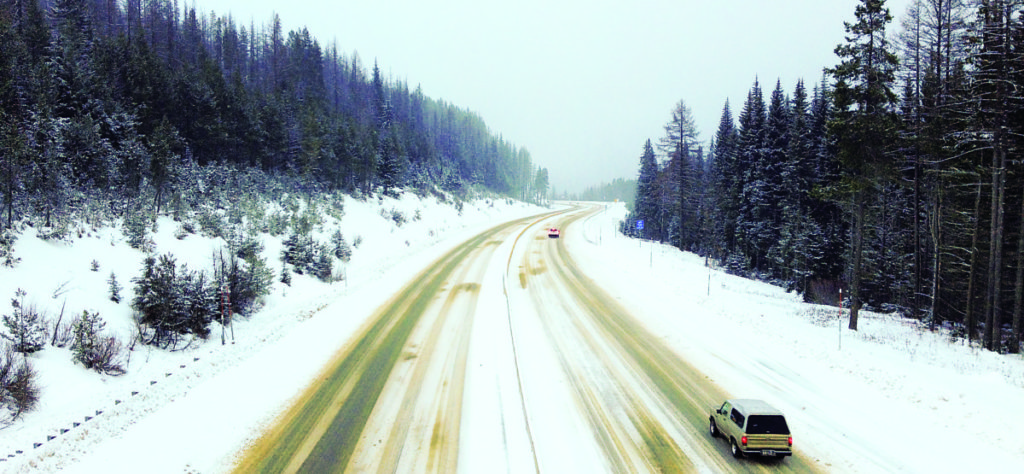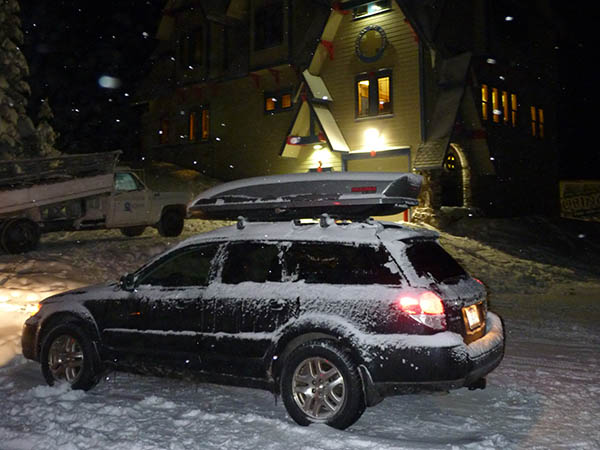Last winter, on a routine drive from Spokane up to 49 Degrees North to ski with my toddler son, our aging 4×4 truck began losing power on an uphill climb a few miles short of the ski hill.
Fortunately, I was able to move out of the road somewhat without ending up in the ditch. There was enough cell service to get a call off to our roadside assistance service for a tow and another call home to my wife for a rescue mission. I then dug into the emergency supplies I keep on hand in the winter and covered up the 4-year-old obliviously snoozing in his car seat with a blanket.
While I waited for the tow truck to arrive, I watched a mix of safe and reckless drivers pass by on the snow and ice covered road, and passed the time thinking about winter driving and being more prepared for being stranded.
Here are a few tips for safer winter driving to think about as we get ready for another season of skiing and snowboarding and driving sometimes sketchy roads.

Make Sure Your Vehicle Is Ready for Winter
Is your ski mobile ready for another season of winter driving? Get it checked out and tuned up by a professional, including a brake and heating/cooling system inspection. Consider vehicle repairs or an upgrade if the prognosis is questionable.
There are also quite a few things most of us can do ourselves: make sure your lights and turn signals are all clean and working, your windshield is chip and crack free, your windshield wipers are in good condition, the wiper fluid reservoir is full, and you have a functioning windshield scraper. And always fill up your gas tank before hitting the road.
Most importantly, have your tires checked out by a tire shop to make sure they are up for winter driving. Don’t forget to check the quality and pressure of your spare tire, and make sure you know how to deploy the spare and have the tools to remove it from your vehicle, as well as the jack to swap out tires.
Jumper cables and basic tools for dealing with dead batteries should also be in everyone’s winter driving kit. Finally, be sure to have the number for any AAA or other roadside assistance services you have with you in the vehicle.
Get Yourself Ready for Winter Driving
Assess the conditions before hitting the road and make sure you and your vehicle are up for what’s out there. On particularly snowy or icy days, assess your comfort limits and know when to stay home and off the roads.
Once you head out on the road, make sure you have everything you need for the drive close by to avoid distracting yourself while rummaging around for your water bottle or a snack when you should be paying attention to the road.
If you need to switch the tunes, answer a phone call, or make a text, pull over in a safe place. Distracted driving on winter roads is the cause of many accidents.
And finally, if you want to decrease your odds of an accident, slow down and don’t follow too close to other vehicles. If you’re holding up traffic or someone is tailgating you, find a safe place to pull over and let them by.

Be Prepared for Emergencies
When travelling winter mountain roads, it’s always a good idea to keep your vehicle well-stocked with basic safety and emergency gear and supplies. Things like road flares or reflective cones to warn oncoming drivers of an accident or vehicle stranded on the road are a great idea, as is a basic first-aid kit to deal with minor injuries.
A shovel and extra winter gloves for digging a vehicle out of a snowbank is highly recommended. And keep a blanket or two and extra warm clothes, food, and water in a pack or bin that stays in the vehicle to help make a wait for help much less miserable and potentially lifesaving.
Driving up to the mountains in the winter doesn’t need to be a nerve-wracking experience. Plan ahead, be prepared, slow down, and take it easy on the roads this winter!
Originally published as “Planning Ahead for Safe Winter Driving” in the October-November 2019 issue.













